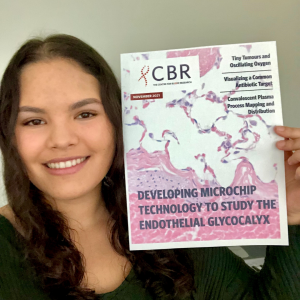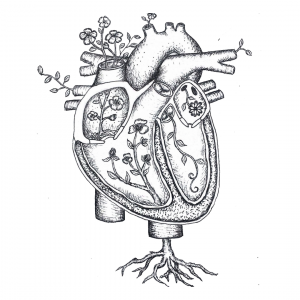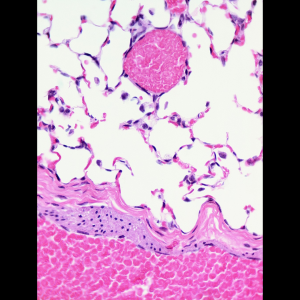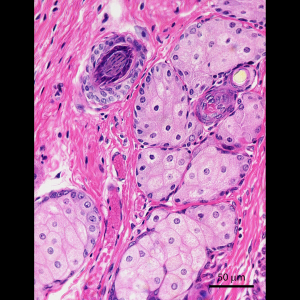We love seeing diverse talent from CBR members, many of whom are brilliant artists and photographers as well as scientists! These images were submitted to our most recent CBR Cover Art Contest. The winning image, by Taylor Da Silva, was featured on the cover of our November 2021 CBR Magazine.
From micrographs to medical illustrations, we were thrilled to see such artistic creativity.
 "I have always had interest in both the sciences and the arts, and I often like to create a fusion of the two in my drawings.
"I have always had interest in both the sciences and the arts, and I often like to create a fusion of the two in my drawings.
In my Botanical Heart drawing, I felt as if the flowers and vines twisting through the chambers of the heart represented the way that the heart provides life to the rest of the body.
I am an undergraduate student in the Bachelor of Medical Laboratory Science program at UBC, and I took the other two images during our microscopy course as we learned how to use a light microscope and take micrographs of histological slides. I particularly enjoyed this course because of the pictures I could see in the slides; these include the rectal cells resembling van Gogh’s The Starry Night, and a blood vessel resembling the sun setting over a sea of red blood cells."
 |
“Botanical Heart” Ink drawing of a human heart with various types of flowers winding through the chambers of the heart and blossoming out of the vessels. |
 |
“Alveoli and Pulmonary Blood Vessels (winning entry)” Light micrograph of a hematoxylin and eosin-stained section of a lung. The circular blood vessel appears similar to a sun setting over a sea of red blood cells within the blood vessel below. |
 |
“Rectal Cells” Light micrograph of a hematoxylin and eosin-stained section of a rectum. |
 "This photo was taken while my colleague Elyn Rowe and I were imaging our samples. We were testing extracellular matrix (ECM) compositions for optimizing human brain microvascular endothelial cell protein expression and morphology.
"This photo was taken while my colleague Elyn Rowe and I were imaging our samples. We were testing extracellular matrix (ECM) compositions for optimizing human brain microvascular endothelial cell protein expression and morphology.
My research is associated with developing a perfusable blood-brain barrier model, and the ECM-optimization stage is within the first steps of developing a tight endothelial cell barrier."
 |
“Roses are Red, Violets are Blue, Human Brain Microvascular Endothelial Cells Would Rather Be a Flower, How About You?” Human brain microvascular endothelial cells stained for tight junctions (zonula occluden 1) and nuclei (dapi) resemble a rose. |


